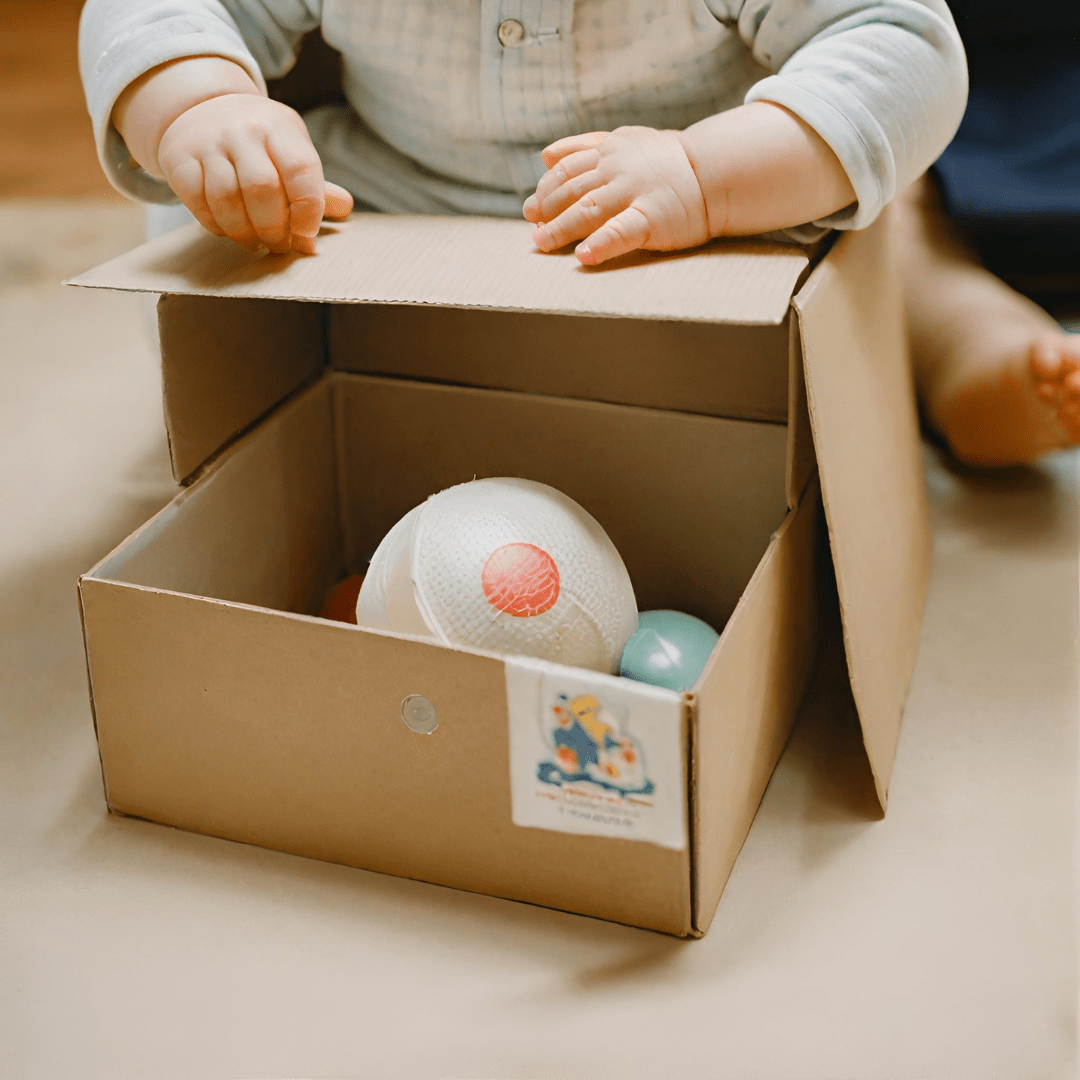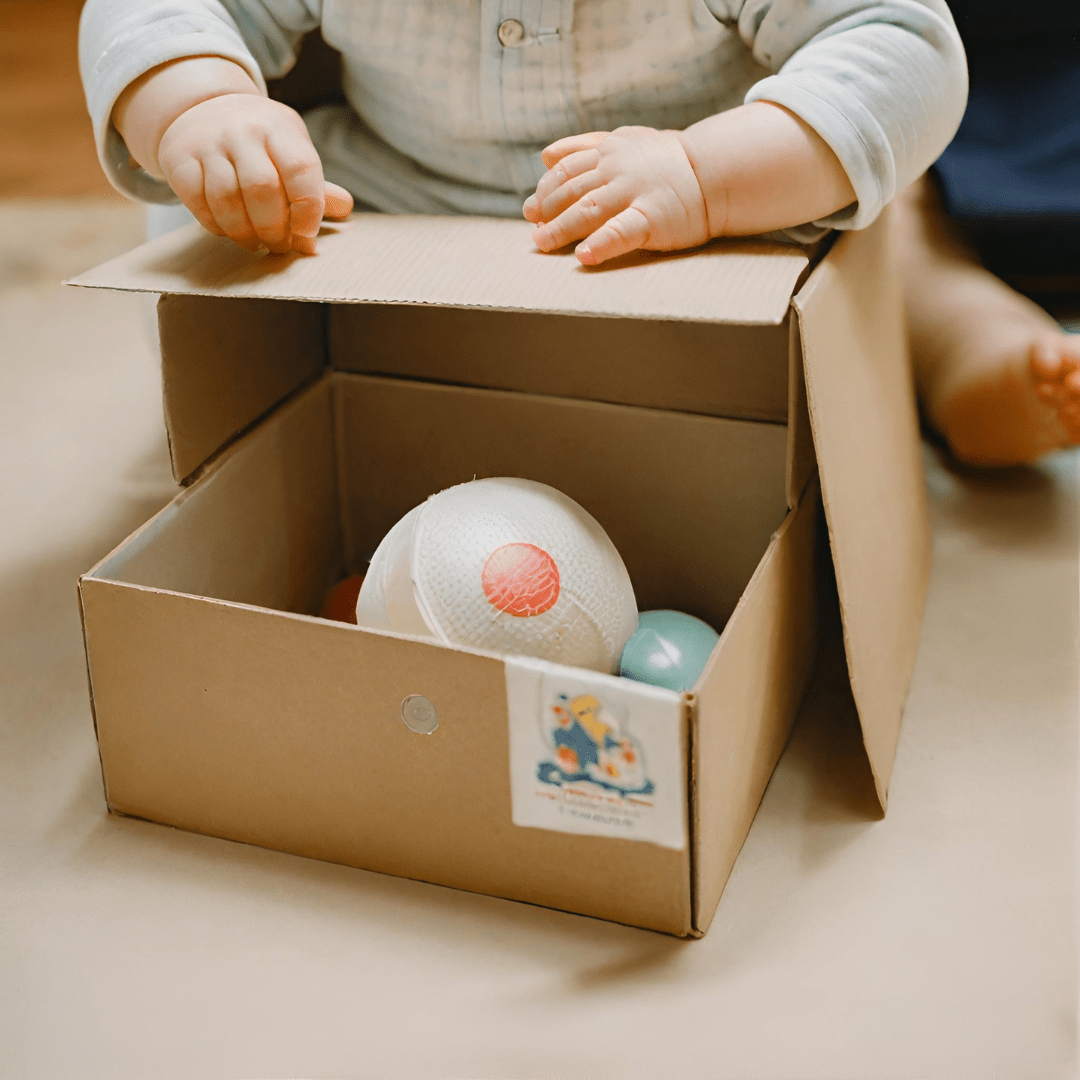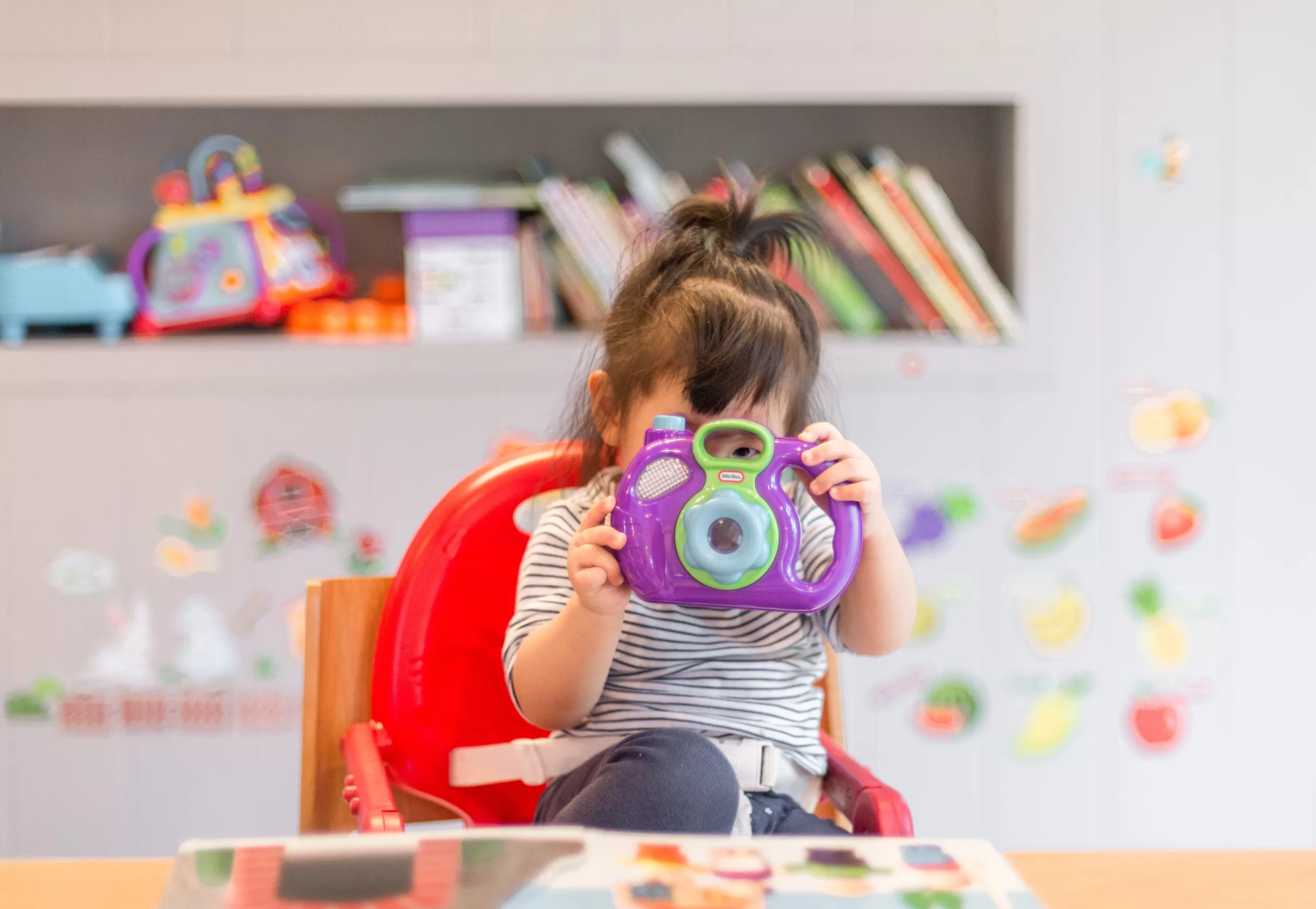
Photo by Ksenia Makagonova on Unsplash
The journey of human cognition is nothing less than fascinating. As we unearth the layers of cognitive development, one profound concept we come across is ‘Object Permanence.’
It plays a pivotal role in shaping a child’s understanding of the world around them. Considered a significant milestone in early childhood learning, it sets the foundation for further advanced concepts that define human behavior and interaction with the surroundings.
Originated from the brilliant mind of Swiss psychologist Jean Piaget, the term ‘Object Permanence’ belongs to Piaget’s Sensorimotor Stage of cognitive development theory.
Defined as the understanding that objects continue to exist even when they are out of sight or tactile contact, it is a critical indicator of a child’s cognitive advent.
Peek-a-Boo, the classic game played between adults and babies, serves as a simple yet insightful demonstration of the phenomenon. As the child develops object permanence, the sense of surprise fades away, affirming their mental representation of the unseen.
Navigating a world where everything disappears the moment it is unseen would be chaotic. It is object permanence that establishes reason, logic, and constancy in our perception of the world.
This element of infant cognition is therefore immensely crucial in child psychology and cognitive development milestones. Without this, the connection and interaction we have with our physical surroundings would be incoherent and disjointed.
Deep-diving into this concept teaches us not just about child development but how our cognition has evolved to grasp complex ideas and concepts.
As we delve deeper into the insights of object permanence in this article, the aim is to unveil the nuances of this concept and its critical role in cognitive development.
A journey that will help us understand key aspects of infant memory, object recognition, and the growth of a child’s understanding, leading us to better comprehend the fascinating path of cognitive development.
Step into the intriguing realm of cognitive development as we explore the universality of object permanence, its subtle emergence, the intriguing tests for identifying it, and its profound implications on child development.
Embrace the journey that emphasizes the significance of psychological concepts in building a child’s understanding of the world, providing us with valuable guidelines to nurture their growth effectively. Be ready for an enlightening excursion into the world of cognitive development.
Definition and Early Signs of Object Permanence
Explanation of Object Permanence
History and Developments
Delving into the origins, object permanence is an integral part of the Jean Piaget theory of cognitive development. Piaget categorized childhood development into various stages. Object permanence belongs to the Sensorimotor Stage, which typically exists in infants from birth to approximately two years of age.
It was Piaget who first identified that an understanding of object permanence forms the basis of our fundamental relationship with the world.
Applied Psychology Perspectives
Infant cognition begins to evolve rapidly as they start interacting more with their surroundings. The concept of Object Permanence strikes a chord in the realm of applied child psychology.
It’s during these early years that the playfulness of the Peek-a-Boo game takes on developmental significance. When an infant persistently realizes that the concealed object isn’t gone but temporarily out of sight, they demonstrate a developing mental representation of the world.
Connection with Cognitive Development
The understanding of object permanence is closely linked to cognitive development in infants. It signifies cognitive maturation and lays the groundwork for further cognitive achievements.
This singular realization serves as the foundation for memory development, problem-solving skills, object recognition, and much more.
Recognizing Early Indicators
Behavioral Signs
Watching a child grow and achieve developmental milestones is a fascinating journey. Object permanence is one such milestone, and its early signs can often be noticed through an infant’s changing behavior.
A common and early sign of developing object permanence is when infants begin to grasp the Peek-a-Boo game’s mechanics. They no longer exhibit surprise when a hidden object reappears, indicative of their growing understanding that objects continue to exist even when unseen.
Milestones Pertaining to Age
While each child develops at their own pace, certain standard age-related milestones are indicative of the emergence of object permanence.
Generally, the first signs appear around four to seven months of age, with a basic understanding solidifying by about nine months. By the age of two years, children typically develop a full understanding of object permanence, understanding that items continue to exist even when not in their field of view.
Variations among children
It’s crucial to remember that the timeline for recognizing object permanence can vary from child to child. Factors such as child’s environment, interactions, and innate cognitive abilities can influence the pace of this understanding.
For instance, a child who frequently engages in games involving hidden objects might demonstrate quicker comprehension of object permanence than a child not exposed to such activities.
Significance in a Child’s Development

Cognitive Benefits
The grasp of object permanence serves as a monumental landmark in early childhood learning as it opens doors to a wide range of cognitive benefits.
It promotes cognitive skills like cause and effect understanding, experience anticipation, exploration, memory development, and problem-solving abilities. Ultimately, this understanding allows children to engage more meaningfully with their environment.
Relationship with other Developmental Stages
Object Permanence isn’t a standalone concept; instead, it’s a cornerstone which leads to learning many other cognitive abilities. The Sensorimotor Stage leads to Preoperational Stage (2-7 years) where children start to think symbolically and make believe play emerges.
They relate their actions or objects to the experiences they’ve had, and their thoughts are influenced by fantasy and their own perceptions.
Understanding object permanence is key to these later, more advanced stages of cognitive development, signifying its integral role in a child’s overall intellectual growth.
Activities to Enhance Object Permanence
Importance of Stimulating Activities
Strengthening the Understanding
While object permanence is a natural phase in cognitive development, stimulating activities can reinforce a child’s understanding of this concept.
Engagement in various games and activities exercises a young mind, solidifying the notion that an object’s existence isn’t bound by its visibility. These exercises are integral to strengthening infants’ mental representation of the physical world around them.
Connection between Play and Learning
The trajectory of early childhood learning is significantly influenced by play. As per Jean Piaget’s theory of cognitive development, play opens a gateway to a child’s learning process, acting as the perfect catalyst for nurturing cognition.
Peek-a-Boo, retrieval games, and other interactive activities offer opportunities to grasp the essence of object permanence while fostering a love for learning that lasts a lifetime.
Long-term Benefits of Engagement
Immersing children in interactive play isn’t just about short-term cognitive outcomes. The benefits of stimulating activities extend far beyond the Sensorimotor Stage.
Learning through enjoyable activities cultivates essential life skills and abilities, such as problem-solving, memory development, and much more. Most notably, it influences the logic-making process, laying the groundwork for advanced cognitive tasks.
Examples of Activities
Peekaboo and Hide and Seek Games

Ever wondered why Peek-a-Boo is such a universally loved game among infants? It provides them with an essential cognitive workout.
Similarly, Hide-and-Seek is another popular game that strengthens the understanding of object permanence. The fun comes from the consistent realization that something missing can reappear, reinforcing the idea that objects continue to exist beyond our sight.
Toy Disappearance and Retrieval
Toys are essential tools in enhancing a child’s cognitive development. Toy disappearance and retrieval games are excellent activities to stimulate an understanding of object permanence.
From simple games like removing and returning a toy blanket to more complex variants involving several concealed objects, these activities serve as mental gymnastics for a young mind struggling to nail down the concept of persistent existence.
Using Everyday Objects
Promoting object permanence doesn’t always require an intricate setup. Everyday household objects offer endless opportunities for engaging games.
Hiding a favorite toy under a cup or a towel, or partially concealing it behind different objects, triggers curiosity and provokes infants to use their growing cognitive skills to find the concealed object.
Tips for Encouraging this Development
Creating a Safe and Positive Environment
When nurturing a child’s cognitive development, the importance of a safe and positive environment cannot be overstated. It’s important to make the child feel secure and comfortable, offering them the freedom to explore.
This exploration assists in physical object understanding and indirectly bolsters the concept of object permanence in their minds.
Balancing Challenge and Enjoyment
Any activity centered around promoting cognitive development should effectively balance challenge and enjoyment. It’s important for play to remain a source of joy, not stress.
Games and activities that enhance object permanence should be adaptive to the child’s current developmental stage, gradually escalating in complexity as their understanding deepens.
Misunderstandings and Misconceptions
Photo by Tanaphong Toochinda on Unsplash
Clarifying Common Misconceptions
Lack of Object Permanence Equals Cognitive Delay
A common misconception is that a lack of object permanence indicates a cognitive delay. It’s imperative to note that cognitive development is not a race but a journey that unfolds at varying paces for different individuals.
Each child’s understanding of object permanence varies and develops at its own pace. An apparent delay in grasping this concept does not necessarily imply a broader cognitive issue.
Misinterpreting Signs
Another misunderstanding lies in the misinterpretation of signs indicative of understanding object permanence. For instance, an infant searching for a hidden object may more accurately reflect memory or object recognition skills.
Distinguishing the nuances of these behaviors can be challenging. Therefore, it’s essential to combine observations of individual behaviors with a more holistic perspective on a child’s cognitive development.
Overestimation or Underestimation of Comprehension
At times, parents or caregivers might underestimate or overestimate an infant’s understanding of object permanence. Expectations based on developmental timelines can lead to misconceptions regarding the child’s cognitive abilities.
Remember, the process of cognitive development is multifaceted and highly individual. Comparisons or preconceived notions based on standard timelines can be misleading.
Addressing Concerns for Parents

When to Seek Professional Advice
While understanding that each child develops at their own pace, it is equally crucial to know when to seek professional advice. Concerns regarding delayed developmental milestones should not be outright dismissed.
If consistently behind on multiple developmental stages, including object permanence, it’s recommended to consult a child psychology professional. Their expertise ensures an accurate understanding of the child’s psychological profile and developmental journey.
Variability of Developmental Timelines
Recognizing the variability of developmental timelines is significant for parents and caregivers. It’s crucial to avoid the pitfall of rigid comparative standards based on age.
While guidelines exist, individuals often develop skills at different rates. In the dynamics of child psychology, patience is key. Allow the child to traverse through the Sensorimotor Stage at their own pace.
Understanding Individual Differences
Jean Piaget theory highlights that individual differences are a natural part of cognitive development. A child’s surroundings, experiences, genetic makeup, and a range of other factors contribute to how they understand the concept of object permanence. Parents need to be mindful of these variances and adapt their approach to support their child’s unique journey effectively.
Educating to Promote a Healthy Development Environment
Enhancing Parental Awareness
One of the first steps towards facilitating a healthy developmental environment is to improve parental awareness of cognitive development concepts like object permanence.
Knowing the significance of these psychological concepts and their impact on a child’s understanding of the world can help caregivers better navigate their child’s cognitive development journey.
The Balance between Patience and Stimulus
Suitably facilitating a child’s cognitive development requires a delicate balance between patience and stimulus. While ample mental stimulation ensures the child is consistently challenged and learning, patience is just as critical in acknowledging the child’s unique pace of development.
The goal is to cultivate a nurturing and supportive environment that allows the child to explore, understand, and grow in their own time.
In delving into the monumental world of cognitive development, understanding object permanence emerges as a keystone concept. It’s not just a phase in a child’s cognitive progress but a crucial determinant shaping their perspective of the world. This reveals the capacity of an infant’s mind to perceive and anticipate, laying the groundwork for more complex cognitive tasks.
Promoting this awareness is not a one-time endeavor but a strategy that needs to be interwoven in a child’s daily interactions and play experiences. Every game played, every object hidden and found, subtly imparts a lesson about persistent existence, fostering their cognitive growth.
From the classic Peek-a-Boo game to the fascinating behavioral changes as the mind of a child grasps the concept of object permanence, it’s a journey of unprecedented growth and opportunities to learn.
It leans into the foundation of a child’s future understanding of the physical world, prompting curiosity and laying the foundation for logical reasoning and problem-solving capacities.
A nuanced understanding of these dynamics can provide caregivers valuable insights to facilitate this phase of cognitive development most optimally.
However, it’s equally important to dispel the myths and misconceptions that surround the concept of object permanence. Not every child will manifest the understanding of object permanence at the same age or in the same manner – and that’s perfectly okay. Cognitive development is not a competition, but a uniquely tailored journey for each child.
Equally critical is recognizing the importance of fostering an environment conducive to foster all aspects of a child’s cognitive development, marked by safety, positivity, patience, and consistent stimulation.
As we step back from this exploration of object permanence, the implications of this understanding resonate beyond immediate cognitive outcomes. In nurturing a child’s understanding of persistent existence, we are setting them up for logical reasoning, problem-solving, and the ability to navigate the world confidently.
These foundational skills cultivated early in life bear relevance even into adulthood – a testament to the crucial role of early cognition.
In conclusion, encouraging continued learning for child development is a path filled with rewards and challenges. But understanding and acknowledging the vital role of object permanence can indeed make the journey much more effective and fulfilling.
May this exploration serve as a stepping stone towards fostering enriched cognitive environments for our young learners, sparking their inherent curiosity and facilitating a love for lifelong learning.



